what is plc?programmable logic controller meaning
Published:2024-11-19 16:39:29
In today's industrial production,PLC has become more and more important and common,but many people do not have a very clear understanding of it.Today,we will introduce PLC in detail from all aspects so that you can truly understand it.
Definition and basic concepts of programmable logic controller(PLC)
PLC is a digital computing and operating electronic system designed specifically for use in industrial environments.It is used in industrial automation to automate specific processes,machine functions or entire production lines.
It uses a programmable memory that stores instructions for performing operations such as logic operations,sequential control,timing,counting and arithmetic operations.It can automate the control of specific processes,machine functions or production lines,process input data and control output devices according to pre-programmed logic,and communicate in a variety of ways in the Industrial Internet of Things(IIoT)and Industry 4.0 environments.
As an industrial computer control system,it continuously monitors the status of input devices,controls output devices according to custom programs,realizes automation of production processes,has the ability to change and copy operations,collect and communicate information,and the system is modular and can flexibly configure I/O devices.It controls various types of mechanical equipment or production processes through digital or analog input and output.
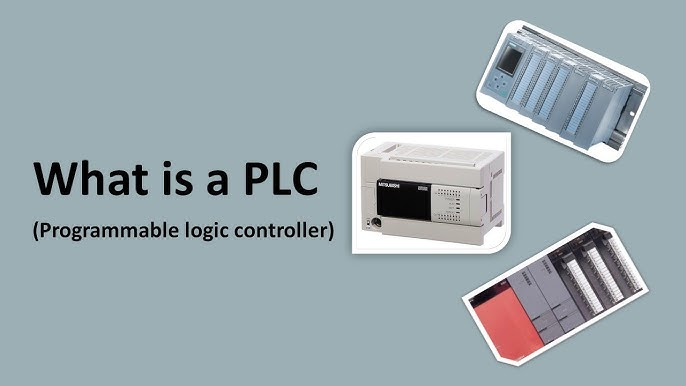
Comparison of related concepts
PLC is different from industrial PC,microcontroller,etc.For example,PLC focuses on industrial control tasks,and has different programming methods and operating systems;compared with relay logic systems,PLC programming control is more flexible and can reduce hardware wiring;microcontrollers are highly integrated and suitable for specific repetitive tasks,while microprocessors are used for complex processing tasks.
Development History
Invented by Dick Morley in the late 1960s,it was initially used in the automotive industry to replace complex relay logic control systems.As technology has evolved,it has continued to improve,become increasingly powerful,and its scope of application has continued to expand.
Hardware structure
It is mainly composed of CPU,I/O module,power supply,programming device,memory,etc.CPU is the core,executing program instructions;I/O module connects external devices;power supply provides electricity;programming device is used to write programs;memory stores programs and data.It includes power supply,central processing unit(CPU),input/output card(I/O)and backplane or rack for placing I/O card.The backplane realizes the electrical connection between components and each part works together.
Processor(CPU):It is the core component of PLC,responsible for executing program instructions,data processing and logical operations,etc.Different models of PLC have different CPU performance,such as processing speed,storage capacity,etc.
Input/output(I/O)module:used to connect external devices,such as sensors,actuators,etc.Input modules receive external signals,while output modules send PLC control signals to external devices.I/O modules are divided into digital and analog to meet different types of signal transmission requirements.
Memory:includes system memory and user memory.System memory is used to store the PLC's operating system and system programs,while user memory is used to store user-written applications and data.The size of the memory affects the complexity of the program and the amount of data that the PLC can store.
Power module:Provides stable power supply for other components of PLC to ensure the normal operation of the entire system.Its performance indicators include output voltage,current,etc.,which need to meet the power consumption requirements of the PLC system.

PLC software components
System software:provided by the PLC manufacturer,responsible for managing the PLC's hardware resources,executing user programs,communicating,and other basic functions.It is the basic software environment for the normal operation of the PLC.
User program:It is written by engineering and technical personnel according to the control requirements to realize specific control logic.The user program is input into the PLC through the programming software.The programming software provides a variety of programming methods,such as ladder diagram programming,instruction table programming,etc.,to facilitate user program design.
How PLCs Work
The working process consists of four basic steps,which are executed in a continuous cycle:
Input Scan:Detects the status of all input devices connected to the PLC.
Program Scan:Executes program logic created by the user.
Output Scan:Enables or disables all output devices connected to the PLC.
Housekeeping:includes communication with the programming terminal,internal diagnostics,etc.
The input module receives signals from sensors,switches and other devices,processes them through the CPU,and then controls motors,valves and other devices through the output module.It can process digital and analog signals.Some advanced PLCs also support network communication and data processing functions.
Different PLCs differ in hardware configuration.Some compact PLC units integrate the CPU,inputs,and outputs in the same unit,while in rack-mounted modular PLC systems,the I/O modules and CPU modules may be separated,and the I/O modules can be located near or far from the CPU.
Main features and advantages of PLC
1.High reliability:It has strong anti-interference ability and can operate stably in harsh industrial environments.For example,its hardware uses isolation and filtering technologies,and the software also has a variety of error detection and correction mechanisms.
2.High flexibility:You can adapt to different control tasks by modifying the program without changing the hardware wiring.For example,on a production line,when the product process changes,you only need to adjust the PLC program.
3.Simple programming:Usually intuitive programming languagessuch as ladder diagrams are used,which are easy for engineering and technical personnel to master.The programming is relatively intuitive and the programming language is simple,reducing complexity and cost.
4.Mature technology:There are a lot of testing and research materials,and rich programming and integration tutorials.
5.Wide price range:There are basic models suitable for small businesses and startups.
6.Strong versatility:suitable for a variety of process and system control.
7.No mechanical moving parts:high reliability and can operate stably in harsh industrial environments.
8.Fewer components:easy troubleshooting and less maintenance downtime.
9.Low energy consumption:helps save energy and simplify wiring.
The above are its advantages over traditional hard-wired control system PLC.In short,it is easier to build,install,maintain and modify,can update programs remotely,can quickly develop complex logic,adapt to harsh environments,and has fast execution speed.
Main Disadvantages and Limitations
The above introduces the various advantages of PLC.At the same time,it also has its own disadvantages and limitations.
1.Limited process capability to handle complex data or large amounts of analog input.
2.PLC programming software from different manufacturers is often incompatible,and programming interfaces have poor interoperability.
3.Susceptible to electromagnetic interference,which may cause problems such as memory corruption and communication failure.
PLC Programming
Commonly used programming software includes Studio 5000 Logix Designer,Connected Components Workbench,RSLogix 500,etc.
Programming methods include Ladder Logic,Function Block Diagram,Structured Text,Sequential Function Chart,Instruction List,etc.Ladder Logic is the most commonly used graphical programming language,and some manufacturers provide proprietary programming software.
Among them,ladder logic is the most commonly used programming language.It simulates circuit diagrams with a graphical interface and is easy to understand and implement.Ladder logic is based on graphical programming of relay circuit hardware and uses"ladders"to represent logic,which is easy to understand and implement.Languages such as structured text are suitable for complex program writing.Most PLC programming follows the IEC 61131-3 standard.

Types of PLCs
By size and function
Large PLC control systems:such as Allen-Bradley's ControlLogix 5580 Controllers,are suitable for applications with extremely high requirements for availability,communication,I/O and motion control.
Small PLC control systems:such as CompactLogix 5380 Controllers,can meet the needs of smart machine and equipment manufacturing,with a variety of models to choose from,including standard,safety,extreme temperature and airborne models.
Micro PLC control systems:such as Micro820 Programmable Logic Controller Systems,are suitable for small independent machine control and remote automation applications,with relatively few points and functions.
According to structural form
All-in-one PLC:Integrates the controller and HMI panel,such as Unitronics products,saving time,reducing wiring,lowering costs,and unifying the programming environment.
Modular PLC:Such as Delta's AS series,the hardware structure is modular,more flexible,and highly scalable.It can meet the needs of applications of different scales through expansion modules.It is suitable for large-scale and complex applications,but it is more expensive and requires more maintenance.
Key factors to consider when choosing a PLC
Electrical Capacity:Ensure compatibility with the electrical system.
Processing speed:Meet application requirements.
Compatibility:Compatible with existing system hardware.
Temperature tolerance:Most are suitable for 0-60°C,some special models can work in extreme temperatures.
Memory:Enough to store the operating system,instructions,and execute functions.
Connectivity:There are enough ports to connect the required peripherals.
Analog I/O:Choose whether analog input and output functions are required based on application requirements.
PLC application industries and scenarios
Manufacturing:Widely used in industrial automation fields,such as manufacturing,oil and gas,water treatment,food and beverage,life sciences and other industries,for controlling production processes,equipment operation,data collection and monitoring,etc.
Logistics and warehousing:In automated warehouses,PLC controls equipment such as stackers and conveyors to achieve automatic storage and handling of goods.
Oil and gas industry:for automation,control and safety systems;
Water and wastewater treatment industry:realize reliable,flexible and integrated control systems,reduce project and maintenance costs;
Food and Beverage Industry:for integrating operations,improving performance and ensuring product consistency;
Life sciences:used to build future automation and information system facilities,etc.
The above is a detailed introduction to the principles,characteristics,applications,etc.of PLC(Programmable Logic Controller),as well as some key points to pay attention to when choosing.I believe that after reading it,you will have a new understanding and comprehensive knowledge of it.
-
 202307-07
202307-07LS PLC use introduction
1, for switching quantity controlThe ability of PLC to control the switching quantity is very strong. The number of points controlled by the input and output points, as few as a dozen points, dozens o···
-
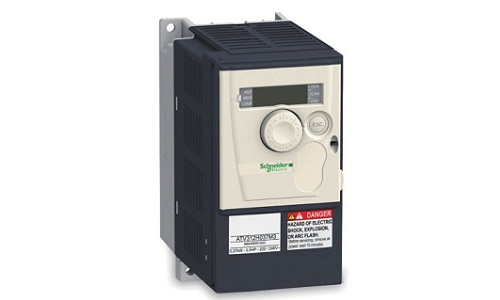 202302-08
202302-08Reduce Schneider inverter interference measures
(1) Inductance and capacitance are added on the input side of Schneider inverter to form LC filtering network.(2) The power line of Schneider inverter is directly supplied from the transformer side.(3···
-
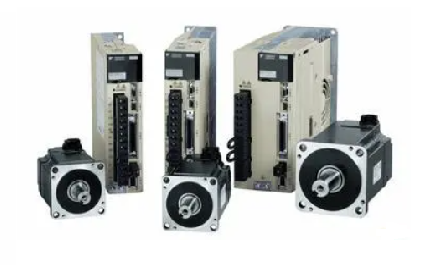 202309-14
202309-14Yaskawa servo drive debugging method steps
1. Basic wiringThe main power input is 220V, which is connected from L1 and L3 (the actual use should refer to the operation manual); Control power input r, t can also be directly connected - 220V; Mo···
-
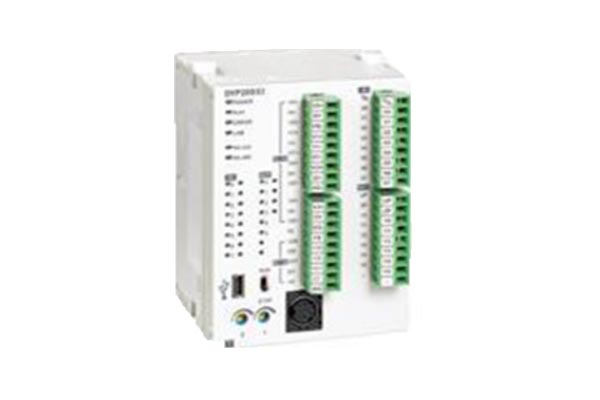 202301-12
202301-12Delta PLC maintenance knowledge introduction
1. Delta PLC power-on running light is not on, ERROR flickers, the possible cause is: no program2. Delta PLC can not communicate with the computer, which may be: RS23 is bad3. If the power indicator o···
-
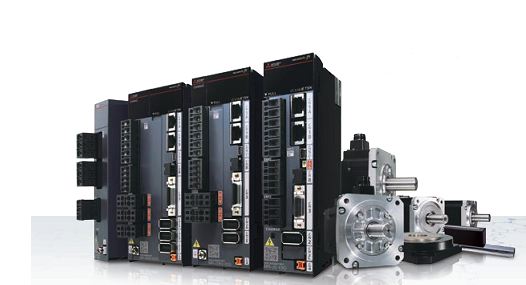 202302-02
202302-02Mitsubishi inverter overload fault judgment method
1. Check whether the three-phase power of the motor is balanced(1) If the three-phase voltage of the motor is not balanced, the three-phase voltage of the output end of the Mitsubishi inverter should ···



 +8618621383628
+8618621383628 +8613811814778
+8613811814778 info@zhongpingtech.com
info@zhongpingtech.com Building 26, Liyuan Community, Chaoyang District, Beijing, China
Building 26, Liyuan Community, Chaoyang District, Beijing, China